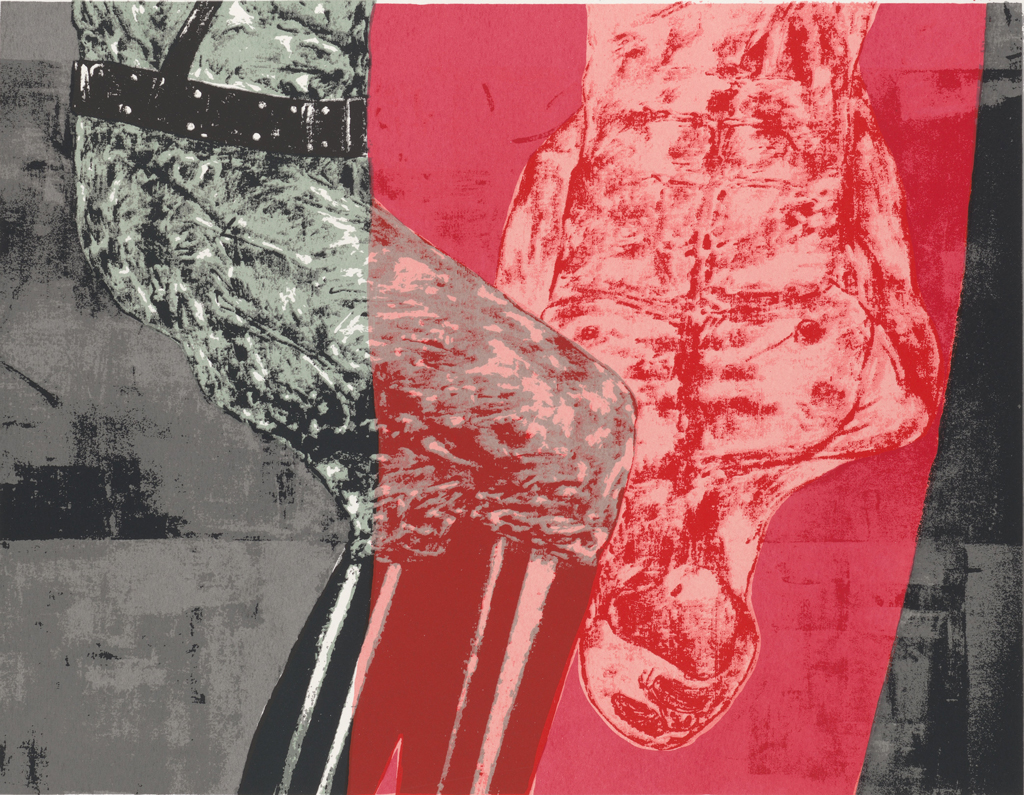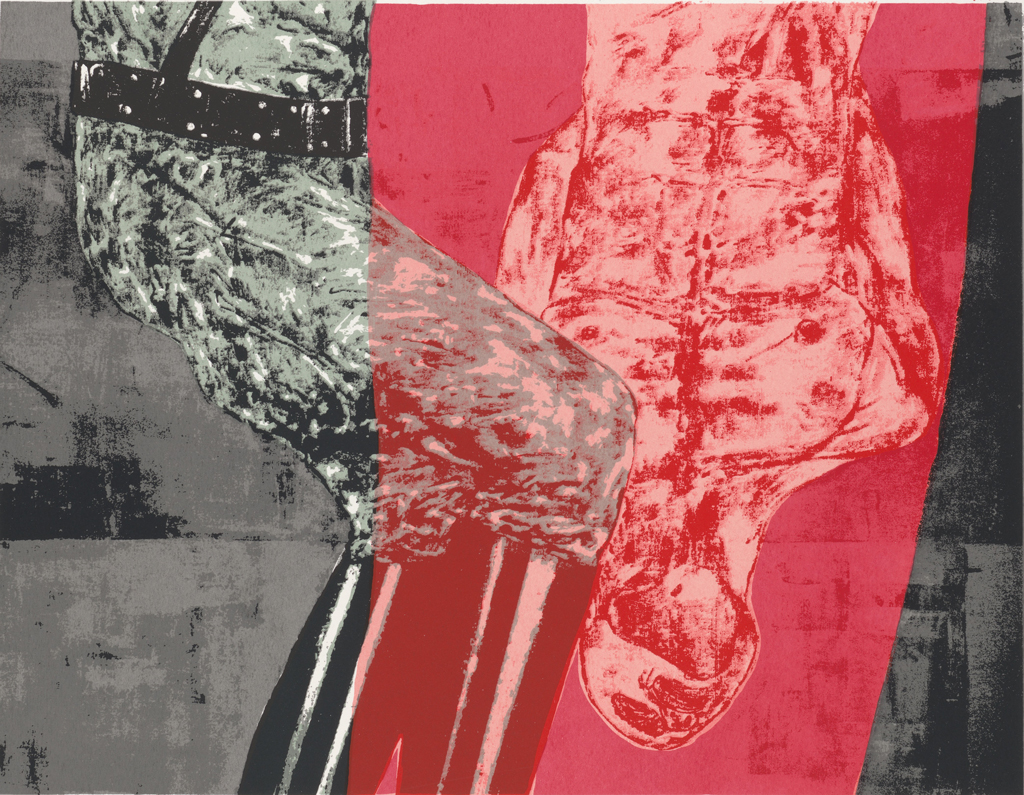[ad_1]

Leon Golub, Interrogation, n.d., screenprint.
©THE NANCY SPERO AND LEON GOLUB FOUNDATION FOR THE ARTS, LICENSED BY VAGA, NEW YORK, NY/THE METROPOLITAN MUSEUM OF ART, NEW YORK, INTENDED GIFT OF JON BIRD
Leon Golub’s figurative paintings, many of which depict scenes of brutality and torture, have historically been considered most at times when they prove politically relevant. One of those times is right now. Currently on view at the Met Breuer in New York is a selective survey of Golub’s work, which, to contemporary eyes, can evoke recent instances of police shootings and terrorism. With this show in mind, republished below is a fragment of an article titled “Is there a new Chicago school?,” from the October 1955 issue of ARTnews. Included are meditations on some of Golub’s early work, including his disturbing reinterpretations of Hamlet and sphinxes. —Alex Greenberger
Excerpt from “Is there a new Chicago school?”
By Patrick T. Malone and Peter Selz
October 1955
An enthusiastic appreciation of younger talents developed in the Windy City
Leon Golub is a highly educated painter. He has two B.A.’s (one in art history) and an M.F.A. He now teaches at Wright Junior College and Northwestern University. In an effort to evaluate his own painting and the art of his time, he has made critical revisions of some established evaluations of contemporary art and, in this regard, his writing is more socio-psychological than that of most artists. In a recent article, “A Critique of Abstract-Expressionism,” published in the College Art Journal, Golub wrote, “Only the rare artist who is iconoclastically remote, survives with an intrinsic and personal art. If an art form becomes too “free-floating,” that is, dissociated from representative contents, it may lose identification and become somewhat anonymous. Such anonymous objects have been functional in some collective cultures . . . and the mechanics of modern society certainly predispose towards anonymous responses.”
Golub feels that in order to avoid the dual dangers of anonymous and stereotyped responses, he must rely largely on semiconscious improvisation. He differs from many of his contemporaries by insisting on a precise denotation of image which he achieves by much reworking of the canvas. His images evolve around certain central ideational patterns: frontal figures rigidly, bi-symmetrically extended; hieratic priestly figures; double-headed monsters, seemingly atavistic; princes and kings.
His Hamlet was partially induced by a reading of Ernest Jones’s essay on Hamlet and Oedipus. Golub’s Hamlet is a thwarted prince whose bird-like leg-arms seem to twitch; his enormous hand grafted onto his dwarfed arm gestures imperiously, but impotently. The totem degeneration of a once classic head is one of a series of ambivalences of power and frustration.
Another example of Golub’s iconography is a series of sphinxes, conceived as both totems and enigmas. In the Prodigal Sphinx, the “Assyrian” father—ritualistically scarred—reaches tenderly to the proudly withdrawn, princely son. In the Siamese Sphinx, against a startling blood-pink background, one head stares defiantly, while the other seems to accept its destiny. Both paintings present insoluble conflicts communicated with profound insight and understanding.
[ad_2]
Source link

